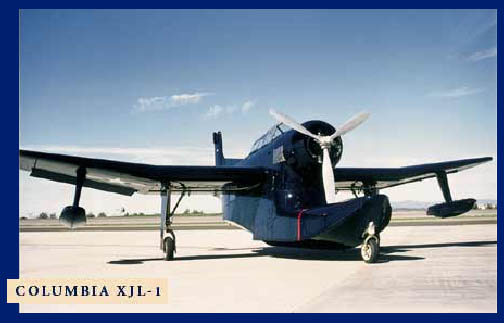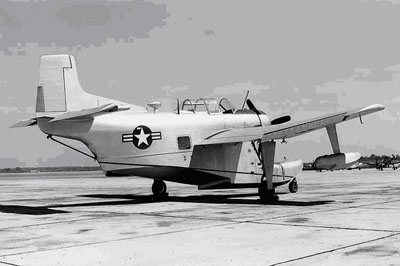For Sale…
Grumman Columbia XJL-1
THE ONLY ONE!
When there are only a few of something in the world, they are called “Rare”.
But when there is only one in the world what do you call it?
The only flying Grumman – Columbia XJL-1 Amphibian in the WORLD.
The aircraft is being offered for sale completely restored, in a flyable and certified condition.
(Experimental Category)
- Total Time Airframe 155.6 Hours
- Total Time Engine 0 SMOH, 1820-86B (Aircraft Cylinder)
- Total Time 0 SPOH, Prop 33D50
- Empty Weight 8305 lbs
- Gross Weight 14,200 lbs
- Navy Bu No 31399 / N48RW (formerly N54207) Palomar Airport

Beautifully Restored to Better than Original
Historical Significance:
In June 1939; Grumman decided to update their very successful J2F amphibian (Duck) biplane to an all-metal monoplane. The aircraft was assigned the Model Number G-42. However due to increased production pressures for other Grumman aircraft such as the, F4F Wildcat, F6F Hellcat, and TBF Avenger, the project of prototyping and test was handed over to the Columbia Aircraft Company which was already under a production contract for 330 J2F-6 Ducks.
Government designation convention named the project “X for Experimental” ,“J for Special Test Temporary” and assigned “L” for the Columbia Aircraft Company. Later Bell Aircraft was assigned the “L”.
The initial designed of the XJL sported a 1200hp Wright R-1820-54 radial piston engine. The Navy then ordered two XJL-1’s Wright R-1820-56, 1,350 hp powered prototypes and assigned them Navy Bu Nos. 31399 and 31400. However, progress on the project was slow and the aircraft were finally completed, post WWII, in 1946. Navy Bu No 31399 made its first flight on October 25, 1946.
Three prototypes were eventually finished. One was used for static (destructive) testing and two for flight. It is not clear if the prototype used for static test was an XJL or XJL-1. Astonishingly, both flying prototypes, survived the wind down of the war. In 1947 they were placed in storage at NAS Norfolk, Virginia. In 1959, both aircraft were sold as surplus and were given civil registration numbers of N54207 and N54205.
N54205 / Bu No. 31400 was obtained by Gregory Board who had the aircraft re-engined with an R-2600 for a projected around the-world flight which never happened. After many years at Ryan Field near Tucson, she is currently on display at Pima Air Museum, Tucson, Arizona.
N54207 / Bu No. 31399 was sold to a Martin Test pilot. After years of languishing in a Maryland woods, the aircraft was acquired by Engineering Guru and Master Warbird Restorer Richard Martin of RWM Inc., Palomar Airport, Ca., who spent thirteen years and untold resources meticulously rebuilding the aircraft to an absolutely pristine condition.. (Picture above)
Unfortunately, on March 12th 1997 the aircraft was damaged during a forced landing at USMC Camp Pendleton, Ca. Damage to Bu No. 31399 consisted of landing gear, forward float, vertical stabilizer and outboard right wing and pontoons.
The aircraft has been undergoing a restoration at RWM facilities in California since 1997.
Specs:
|
| Conventional Aircraft | Wing Root Airfoil | Wing Tip Airfoil |
| Columbia XJL-1 | Clark CHY | Clark CHY |
The Columbia Aircraft Company of Valley Steam, Long Island, New York, USA was founded in the late 1920’s by Clarence Chamberlain, Charles Levine, and Giuseppe Mario Bellanca to acquire the production rights to the Wright Aircraft W.B.2., designed by Bellanca. The W.B.2. was actually the first choice of Charles Lindberg for his attempt to cross the Atlantic. But Lavine refused to sell the aircraft to Lindberg without selecting the flight crew. Lindberg then turned to Ryan Aircraft in San Diego to build him the “Spirit of Saint Louis”.

Navy Bu No 31400 Markings: U.S. Navy, Patuxent River NAS, 1947 Registration: N54205